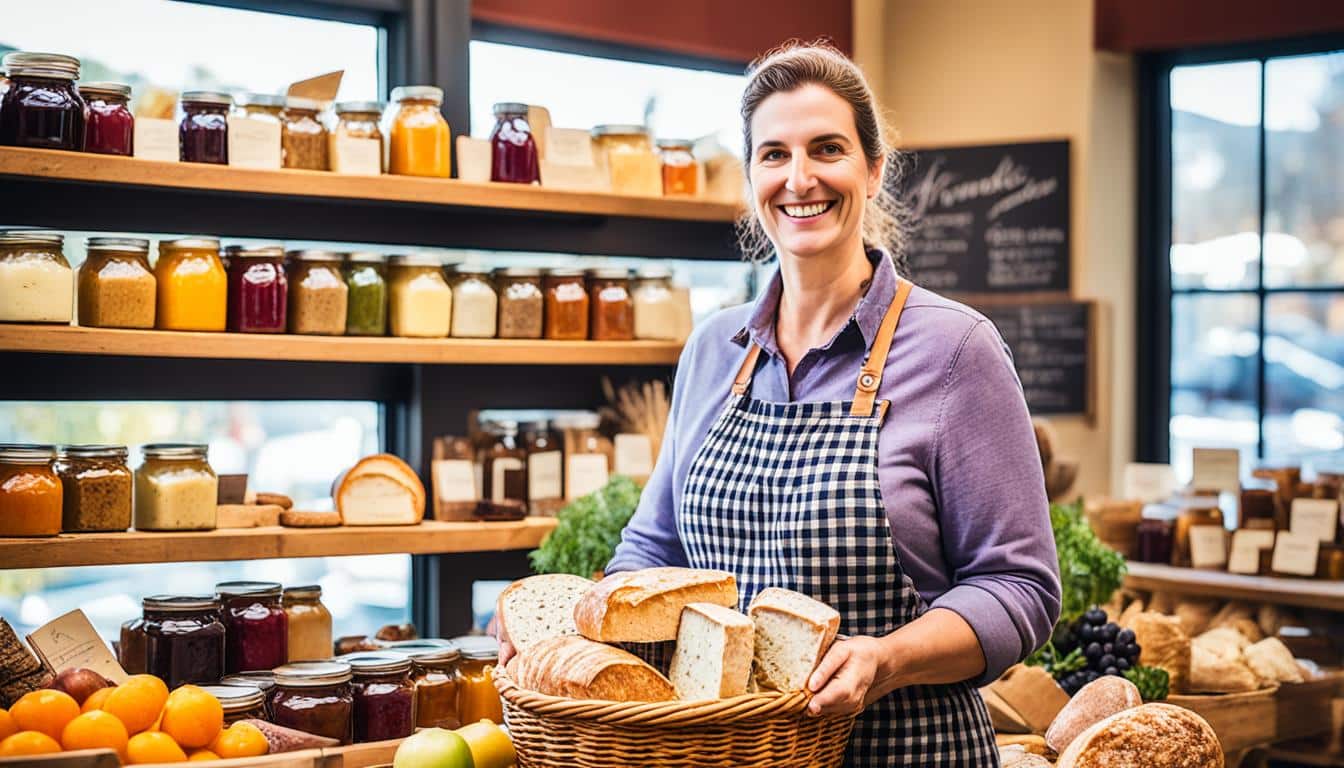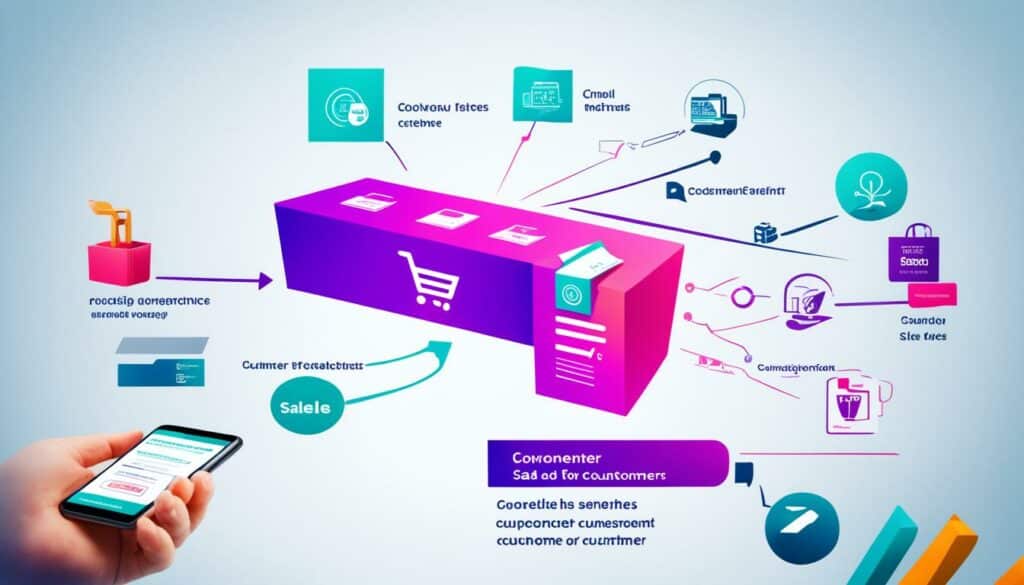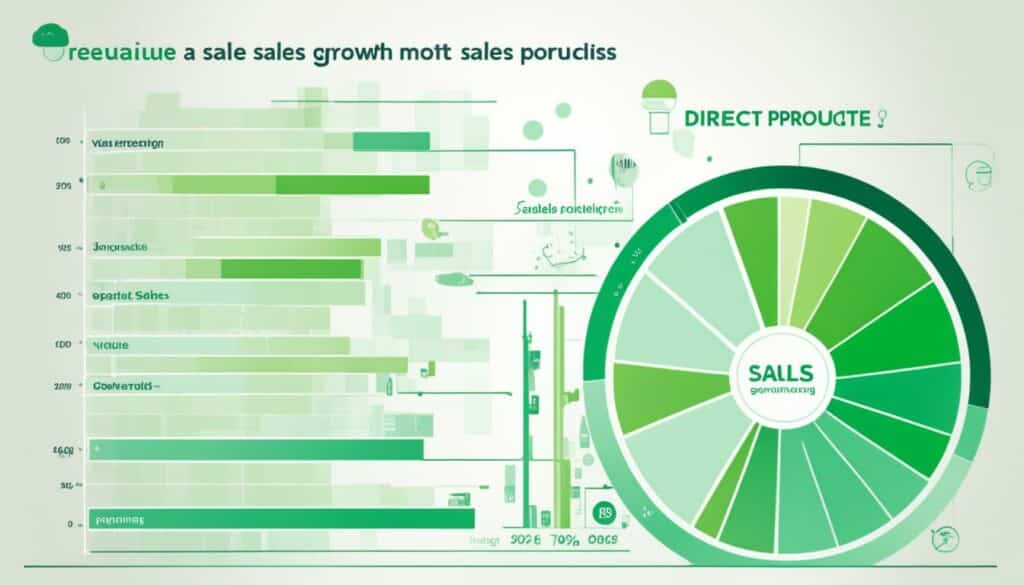Menu

Did you know that since 1913, the share of a consumer’s food money going to farmers has dropped sharply? Back then, farmers got 46% of the shopping dollar. Yet, by 2006, this fell below 20%. The USDA shows this decline. It stresses why farmers must find new ways to earn.
One smart way forward for them is to create value-added products. These are familiar items made better or different through more work and imagination. With this, farmers can make their goods more attractive to customers and boost their sales without middlemen.
Turning to direct sales and adding value to products can help businesses big time. They can keep more of the money people spend on food. This also means they can introduce top-quality products. This move ups their game in the market. Selling direct brings more than extra cash. It also makes farms noticed more, extends when they can sell, and makes them thrive better overall.
Getting value-added products to stand out depends on the so-called four Ps: product, price, promotion, and place. These are major in planning how you sell directly. It’s also crucial to show why your products are better. So, highlight your special making ways, attractive packaging, or unique brand. This helps your products seem top-notch and tempt more buyers.
Value-added products have changed how we see unique items in direct sales. By improving raw ingredients with new methods, smart branding, and useful packaging, these products gain more worth. This makes the final product cost more than just the production cost.
Value-added products start as something basic but become more valuable. This change can happen through special ways of making them, branding that stands out, and packaging that shouts quality. The aim is to make goods that seem worth more to people. This way, companies can charge more for their product, which makes it more profitable.
Choosing to focus on value-added products can lead to big profits. These products can sell for a lot because they’re seen as different, high-quality, and maybe even unique. This not only attracts customers who are willing to pay more but also helps keep them coming back. That’s loyalty.
Knowing the value-added these products bring helps in setting prices right and choosing the best ways to sell them. It’s important to follow rules, like those set by the FDA, for food safety. Even though getting these approvals can be hard, the good effects are worth it.
Value-added products help companies not just earn more money, but also connect with customers. This keeps them strong in the market over time.
To boost direct sales of value-added items, it is key to plan with the market in mind. Places like farm shops, online stores, and CSAs play a big part in selling directly. Sellers need to know what makes their products special for their particular customers. This helps keep prices high and profits sound.

In Washington, there’s a lively scene for selling directly. It has lots of independent grocers and food co-ops. And, its network of outlets shows how far direct sales can go.
“Direct marketing farms often find success by leveraging multiple channels including farmers markets, culinary and agritourism, and direct sales to local restaurants and food institutions such as schools. Creating direct relationships with food service buyers is key.”
Food hubs in Washington are making it easier for farms to reach new markets. This is especially true for big buyers like schools. Matching what a farm offers with what these buyers need is very important.
When selling these goods, using the right sales strategies is crucial for success.
| Outlet | Description | Benefits |
|---|---|---|
| Farmers Markets | Talking directly to buyers | Learning what customers want, building loyalty |
| CSAs | Selling through set memberships | Having steady income, engaging with the community |
| Food Hubs | Places that connect farms to buyers | Helping to sell products to more people |
The profit margin for these products is often high, between 40% and 60%. This shows how important it is to market them well. By focusing on building their brand and reaching out to customers, businesses can do better in selling directly. Washington’s many ways to sell directly, from the web to local venues, provide many chances for success.
Finding your target market is key when you’re selling special products directly. It’s important to know what makes your potential customers unique. This will help you create a plan that works. Doing market research for online sales and making detailed customer profiles will help you find the right people to sell to.
To really understand your target market, you need to split it up. This divides the big market into smaller, similar groups. When splitting them up, it’s easier to see which ones are bigger buyers. You’ll look at things like who they are, where they live, what they like, and what they do.
| Segmentation Type | Description | Example Variables |
|---|---|---|
| Demographic | Classifies groups based on common characteristics | Age, Gender, Ethnicity, Income |
| Geographical | Focuses on the location of the target market | Population Density, Growth Rate |
| Psychographic | Delves into values, interests, lifestyles, and attitudes | Values, Interests, Lifestyles |
| Behavioural | Analyses consumer behaviour in the marketplace | Purchase Patterns, Product Usage, Brand Loyalty |
The Zendesk Customer Experience Trends Report 2022 shows 68% of shoppers want a personalised experience. So, focusing on these types of customer groups can really improve your knowledge about the market.
Building customer profiles helps you to understand your market better. This is a vital step for deciding what products to make and how to sell them. You need to know basic things like their age, where they live, and what they earn. Also, you should find out what they like and how they live their lives.
Good direct marketing audience targeting also means using different kinds of data. Talk directly to people with surveys and interviews, or check out what’s already been written. Things like Google Trends or reports from big companies can give you a head start.
Using these methods will help businesses spend their money smarter, bring in more customers, and stand out in selling special products.
Creating a strong Unique Selling Proposition (USP) is key for direct sales. It gives your customers a clear reason to pick your product over others. This is crucial as 70% of consumers favour products with a clear USP. And 90% of consumers say it influences what they buy.
For a USP to work, it must highlight what makes your product special. This special quality grabs the customer’s attention. And it positions your product well against others. 50% of companies say standing out with a unique USP boosts their sales.

A good USP impacts many parts of your business. It shapes your brand’s identity and should be present in all your marketing. 85% of thriving businesses credit their success to a strong USP. And they invest 30% of their marketing budget in promoting it.
More than just marketing, a clear USP changes how buyers see your product. 60% of customers base their buying decisions on a product’s USP. And 80% of customers think companies with a strong USP offer better products or services.
However, not all businesses nail this. In fact, 40% fail to clearly state what makes their product stand out. Crafting a USP that’s both clear and detailed is a must. It should be short but explain the value and uniqueness well.
Look at companies like Death Wish Coffee and Warby Parker for good USP examples. They’re proof of how a strong, clear USP can connect with customers. And make a brand stand out from the rest.
To sum up, a well-crafted USP boosts your brand’s competitiveness in the market. It not only pulls in customers but also drives direct sales. Highlighting your product’s unique benefits can greatly sway customer buying decisions and lead to lasting success.
Setting the right price for value-added products is key to their success. It’s about more than just covering production costs. You need to know what consumers think and how the market works. To do this, businesses can choose from many pricing models. They help set the best price for valuable items and keep profits secure.
Pricing models can differ a lot for these special products. A good way to price them is by their value to the customer. This is called value-based pricing. It works well for things like luxury items or tech gadgets with unique features. On the other hand, cost-plus pricing adds a set profit onto the production cost. But this might make the price higher than what customers see as the product’s worth.
Companies need to carefully work out the costs and profit margins. They must look at both the changing costs (like ingredients) and the fixed costs (such as insurance). Knowing these helps set the right price for high-quality goods.
It’s also important to find the breakeven price. This is the lowest price a product can be marked to cover all costs.
Breakeven Price per Unit = Variable Cost per Unit + (Total Fixed Costs ÷ Projected Units Sold)
Using this formula, businesses can figure out the price they must not go below to avoid losing money. They should also check how adjusting costs, sales, or prices affects their profit.
Luxury vehicles and green products are good examples. Luxury cars are pricier due to their unique features. Green products cost more because they help the environment. With the right pricing, companies can both cover their costs and make money. This builds trust with customers and boosts their brand.
In closing, businesses need smart pricing strategies for their top products. They must calculate their costs and profits well. This approach keeps them competitive and profitable. Finding this balance is key to staying strong in the market for high-value goods.
For businesses selling value-added products, driving sales directly is key. They can sell through e-commerce, farmers’ markets, or their own shops. The link with social media makes these choices even more powerful.

Direct marketing uses personal contact to boost sales. From selling directly at a farm to being part of a CSA, it helps you win more customers. This method is great for products with special features that justify a higher price.
| Direct Marketing Channel | Benefits |
|---|---|
| E-commerce Websites | Large audience reach, convenience, 24/7 shopping |
| Farmers’ Markets | Direct customer feedback, community engagement |
| On-Farm Retail Outlets | Personalised customer interaction, brand experience |
| Specialty Grocery Stores | Niche market access, premium pricing |
Social media can boost direct sales efforts significantly. Sites like Instagram and Facebook are great for telling your brand’s story. Showing how your products are made and sharing customer reviews creates strong connections. This not only boosts sales but also helps people understand why your products are worth their price.
The way you brand your value-added products is key to making them stand out. It helps attract picky customers. Packaging that fits your brand well helps your products pop on the shelves. It also makes the product look more valuable. Since people are happy to pay extra for special or luxury items, good packaging is important for your product to do well.
Good branding tells the story of your product and its values. This story can change how people see your product and make them care. People like products that feel real and offer something different. The packaging helps by showing important information, like being organic or made in a special way. This makes people think more of your product.
When it comes to the packaging, it must be useful and also show off the quality. For example, if you sell dairy products from your local area, your packaging should keep the products fresh and look like it’s from the place. This way, your branding matches what the product is about. It’s what big advice sources like the USDA suggest. This makes your product useful and look good.
The USDA says value-added products improve the product in some way to make it more valuable. This can mean making it better or making it special in some way. With good packaging, this can mean you make a good profit, somewhere between 40% to 60%. Doing a great job with branding and packaging means you follow this advice well. It also helps you get a good place in the market and keeps customers coming back.
For direct sales, it’s key to use the right promotion techniques. These techniques boost product visibility and sales. They help your brand get noticed and keep customers interested.
Skills like digital marketing and event strategies are very useful. They help products reach a wide audience. This, in turn, boosts your sales.
Tools like SEO, PPC, and content marketing are crucial online. They make your products easier to find. With a good SEO plan, customers can discover your products online.
Email campaigns and social media are also effective. They allow you to stay in touch with customers. Valuable content keeps them engaged. Google Analytics helps understand what works best.
Events help customers see the real quality of your products. This includes farmers’ markets and product tastings. Personal connections build trust and loyalty.
Showing your products at craft shows or on-farm events is also beneficial. This is a great way for consumers to try them. Live demos and samples can influence them to buy.
A mix of digital and event strategies is the best way. It’s important to keep an eye on what works. Doing so helps make these techniques even better.
When you sell value-added products directly, it’s vital to deal with risks. The world of direct selling needs a strong plan for risk management. This plan should cover things like what people want, new laws, and the costs of the materials you use. Good risk management not only looks at these factors but also acts to reduce their effects.
In the U.S., farmers markets have grown a lot, from 1,755 markets in 1994 to over 8,000 in 2017, as per the USDA AMS. Surprisingly, even with this growth, direct sale farms are not common, making up less than 10% of all farms. Direct sales only take up a small part, 0.3%, of total farm sales. This makes it clear that farmers must understand the risks and benefits of direct selling very well.

Making a strong risk management plan in product sales means thinking about lots of different dangers. For example, consider who usually shops at farmers markets. There are the Organic Lovers and those who look for Health Foods. Then, there are those in CSA programs, who are usually smart and do most of the family shopping. If your products don’t match what these groups want, you might not sell much.
By looking at information from the USDA and a 2011 Curtis study, I know where farms mostly fit in sales:
This breakdown shows that it’s crucial to know who your buyers are. For example, if your main buyers are keen on homegrown products, set your prices to match what they can spend. This strategy can help you sell more without losing money.
Also, selling more complex products like value-added beef can be tricky. Making sure to meet special standards and deal with issues like care, custody, and control carefully is important. To manage these risks, it’s smart to use contracts that protect you and get advice from legal experts.
Putting a solid risk reduction plan in place is key. By carefully considering and applying these strategies, sellers can grow their businesses safely. This approach leads to a more stable and successful direct selling risk assessment strategy over time.
For companies working with value-added products, following regulations is key, especially in the food field. It’s essential to know and follow rules at the local, state, and national levels. Doing this ensures your products are both legal and safe. We dive into the complex world of food safety and why it’s crucial for these products.
Regulatory compliance means getting familiar with local, state, and national rules. In the US, the Code of Federal Regulations (CFR) breaks down federal rules into 50 titles. These touch on various areas. Take the Marketing Decision Tool and Guide for Grass-fed Beef (EB-374), for example. It helps beef producers create smart marketing plans that follow the law. In Maryland, the Producer’s Guide to Meat and Poultry Processing Regulations (EB 372) clarifies local rules for meat and poultry producers.
| License/Certification | Requirement |
|---|---|
| 20-C License Exemption | Available to NYS residents for producing various products for wholesale and retail agricultural venues. |
| Dairy Sanitarian’s License | Required by the Cornell University Dairy Foods Extension Program for dairy processors. |
| Water Testing | Necessary for food processing activities; private water sources must be certified. |
Keeping food safe is critical to keep customers trust and protect public health. Breaking these rules leads to big fines, legal trouble, and a bad name. The Northeast Center for Food Entrepreneurship in Geneva, NY helps small food companies with product development and following regulations. Resources like the Resource Guide to Direct Marketing Livestock and Poultry share tips for selling meat directly to people.
Farmers who process food off their farms often find it hard to make money. This shows how important it is to stick to the rules. Groups like the Small Scale Food Processors Association support members with marketing, advice, buying together, and ads. They show how knowing the rules and working together is key.
“The farmer’s share of the consumer’s food shopping dollars decreased from 46 percent in 1913 to just fewer than 20 percent in 2006.” – USDA Economic Research Service
New markets, better farm appreciation, and longer selling times can come with value-added products. But, to enjoy these, you must be careful about meeting rules and safety standards.
Keeping track of sales and performance is key in marketing. By using analytics, businesses learn about what customers like and market trends. This knowledge helps them sell better and make smart choices with real information.
Sales analytics tools are great for breaking down lots of data. They show things like how much is sold, how sales change over time, and how customers react. When companies use sales analytics for direct marketing, they can spot where to improve. They can adjust their ads and make products that people really want.

Today, making choices based on data is very important for business success. Advanced analytics help companies figure out what products are doing well. This way, they can focus on selling more of those. They can also manage their stock better and create ads that really work.
| Service/Metrics | Benefits |
|---|---|
| Direct Sales Methods | In-person meetings, demonstrations, emails, video conferences, phone calls, digital marketing through e-commerce platforms |
| Price Control | Organisations can set their own prices, avoiding discounts from partners |
| Efficiency | Reduced time and effort in searching for channel partners |
| Internal Costs | Higher due to need for sales representatives, managers, training, and digital resources |
| Scaling Challenges | Increased hurdles in training, administration, and team management |
| Market Expansion | Requires meticulous planning and additional expenses |
| CRM Tools | Essential for organizing contacts, monitoring progress, and supporting sales teams |
| Meeting Scheduling Apps | Streamline appointment booking processes |
| Product Demos | Crucial for showcasing software or digital solutions effectively |
| Team Communication | Fosters collaboration and efficiency |
By using these analytics every day, companies stay up to date on how they’re doing. They see what’s in demand and what works best. This helps them adjust their sales methods to grow and make more profit.
Keeping customers loyal is key to selling more value-added products over time. People who come back often spend 67% more than new buyers. This shows how crucial it is to have good plans to keep customers from leaving. It’s cheaper to keep current customers happy than to find new ones. This way, businesses can keep growing and making more money.
Good service lays a strong foundation for customer loyalty. When businesses are quick to help and show they care, customers notice. They feel good about the brand and want to come back again. The use of Customer Relationship Management (CRM) software is very helpful. It keeps track of what customers buy and suggests more items they might like, making their experience unique. A global Nielsen study from 2022 found that 88% of people trust advice from friends more than ads. This proves the big value of great service and happy customers.
Rewarding loyal customers is a smart move. Perhaps through points, discounts, cash back, branded credit cards, or special events. These perks make people want to keep buying and also bring customers together. To help, advanced MLM software can improve how businesses interact with customers. It offers personalised service and uses data to stay in touch. By keeping information in one place, everyone involved in the business can offer a smooth shopping experience. Being clear and ethical is vital for creating long-lasting loyalty and growing the business responsibly.
Value-added products become more valuable through special methods or creative branding. Their final form is worth more than the basic materials used.
These products make farms more visible and can be sold for longer periods. They help farms do better financially and reach new customers. This way, farms keep more of the money customers spend.
Sell directly through shops on your farm, online, or with CSA subscriptions. Find a specific group of people willing to pay more for your product. Use smart advertising to make your product well-known and loved.
Learn what your customers like, how they buy, and what they are willing to pay.This helps you set fair prices and make products that people want.
Your USP is what makes your product stand out from others. It tells customers why your product is better. Make sure it clearly shows why your product is special.
Know how much it costs to make, market, and get your product to customers. Pick prices that let you make money while keeping your product’s price attractive to buyers.
Good places to sell directly are your own website, markets, and your farm. Also, use social media to connect with people and increase sales.
Branding and packaging tell the story of your product. They can make your product look more valuable and attract customers.
Online adverts, SEO, and good content can help people find your product. Try giving out samples and hosting events to spread the word. This can help you get more customers.
Things like changing customer tastes, rules, and higher costs can be risky. Have a plan to manage these risks, like having insurance and offering different products.
Meet the rules for where you sell your products. Make sure your food is safe and your labels are correct. This builds trust with customers and keeps you legal.
Use tools to watch how your products are selling. This can show you trends and customer habits. It helps you change your plans and manage stock better.
Be really good to your customers, make their time special, and answer their questions fast. Use programmes that reward them for buying again. This can keep them coming back and bring in new customers too.